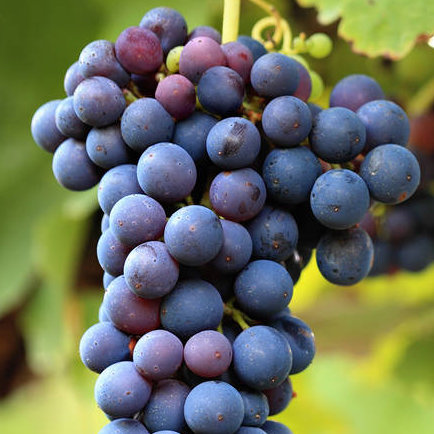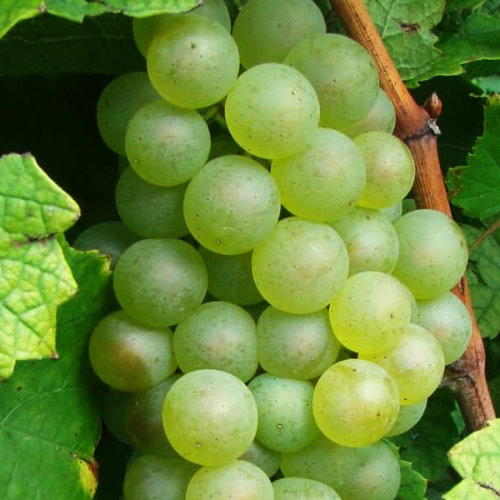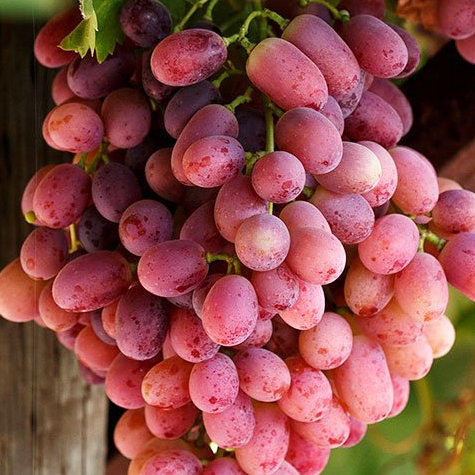Different Grape Shapes and Varieties. Grapes are one of the most popular fruits in the world, with thousands of varieties grown for different purposes. Whether you enjoy them fresh, dried, or fermented, grapes offer a range of flavors, colors, and health benefits. But did you know that grapes also come in different shapes? Here are some of the common grape shapes and varieties that you can find in the market.
Grape Shapes and Varieties






Spherical or Round: These are the most common shape of grapes, with a smooth and symmetrical appearance. They are usually green, red, or black in color, and have thin skin and juicy flesh. Some examples of spherical grapes are Thompson seedless, Perlette, Concord, Autumncrisp, and Moon drop.
Oblate: These grapes are flattened at the poles, giving them a disc-like shape. They are often green or yellow in color and have thick skin and firm flesh. Some examples of oblate grapes are Muscat of Alexandria, Sultana, and Italia.
Ellipsoidal: These grapes are elongated along the equator, giving them an oval shape. They are usually red or purple in color and have thin skin and crunchy flesh. Some examples of ellipsoidal grapes are Flame seedless, Crimson seedless, and Ruby seedless.
Obovoid: These grapes are tapered at one end and rounded at the other, giving them a pear-like shape. They are often green or yellow in color and have thick skin and soft flesh. Some examples of obovoid grapes are Emperor, Tokay, and Autumn Royal.
Elongated: These grapes are stretched along the equator and the poles, giving them a finger-like shape. They are usually black or purple in color and have thin skin and firm flesh. Some examples of ellipsoidal elongated grapes are Beauty seedless, Red Globe, and Black Corinth.
Ovoid or Oval: These grapes are like ellipsoidal grapes but have a more rounded shape. They are usually green or red in color and have thin skin and juicy flesh. Some examples of ovoid or oval grapes are Chardonnay, Sauvignon Blanc, and Riesling.
Grape Cluster Shapes
In addition to individual grape shapes, grapes also form different cluster shapes when they grow on the vine. Below are some of the common grape cluster shapes:
Short Conical: These clusters are short and narrow at the base and wide at the top. They are usually compact and dense, with uniform berries. Some examples of short conical grapes are Cabernet Franc, Cabernet Sauvignon, and Merlot.
Conical-Shouldered: These clusters are like short conical clusters but have one or more shoulders or branches at the top. They are usually loose and open, with variable berries. Some examples of conical-shouldered grapes are Carménère, Pinot Noir, and Zinfandel.
Long Conical: These clusters are long and narrow at the base and wide at the top. They are usually compact and dense, with uniform berries. Some examples of long conical grapes are Chardonnay, Sauvignon Blanc, and Riesling.
Cylindrical: These clusters are cylindrical in shape, with no tapering or widening at either end. They are usually loose and open, with variable berries. Some examples of cylindrical grapes are Chenin Blanc, Gewürztraminer, and Muscat.
Cylindrical-Winged: These clusters are similar to cylindrical clusters but have one or more wings or branches along the length. They are usually loose and open, with variable berries. Some examples of cylindrical-winged grapes are Pinot Gris, Pinot Blanc, and Syrah.
Winged-Double: These clusters have two main branches that diverge from the base, forming a V-shape. They are usually loose and open, with variable berries. Some examples of winged-double grapes are Grenache, Mourvèdre, and Tempranillo.